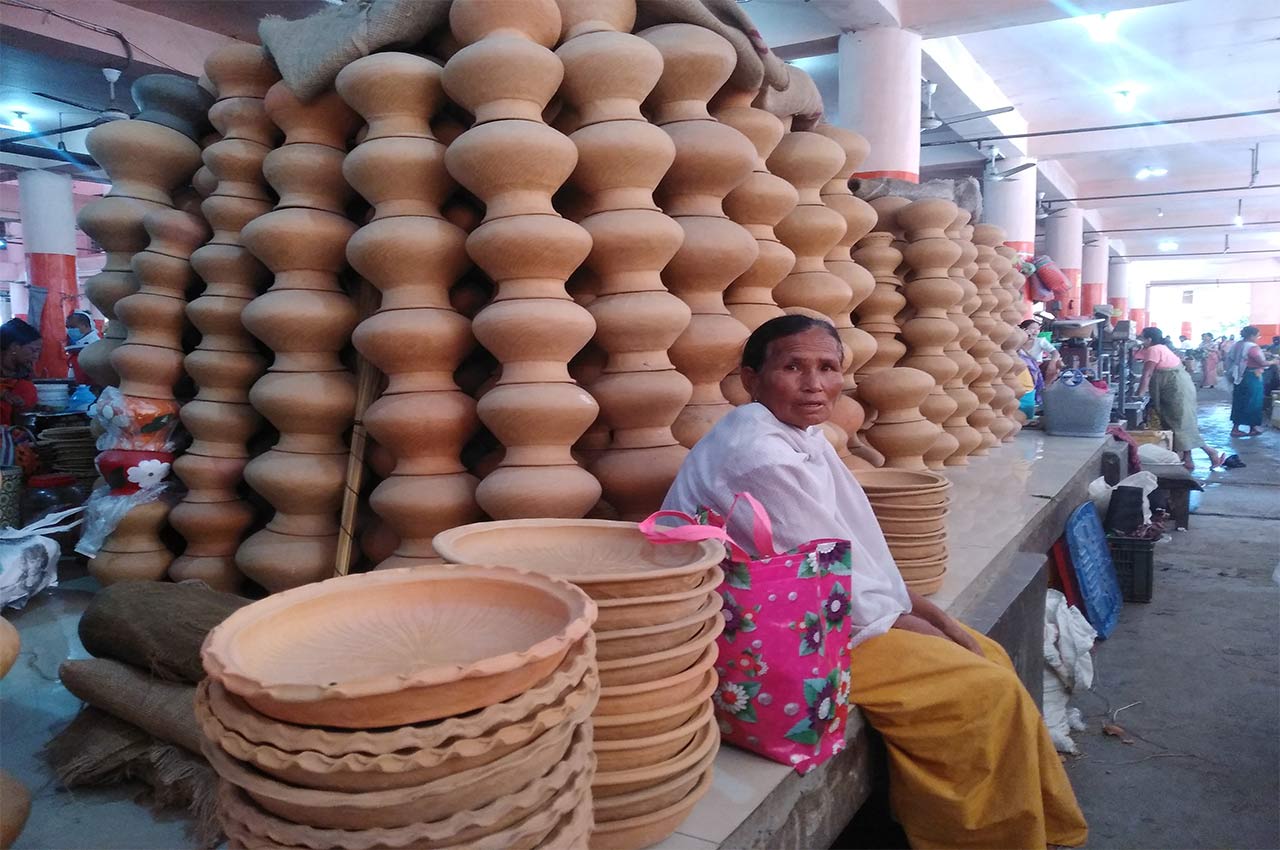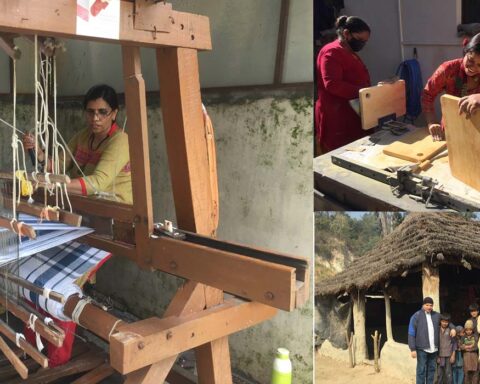After driving out of Imphal southeastwards for about an hour, the sense of approaching Thongjao village takes hold as earthenware and pots adorning the entrances of houses along the road catches the eye. This quaint village is the pottery hub of Manipur. Thongjao’s potters have skills passed down through generations.
They proudly claim that they are the only surviving village and community in Manipur that continues to engage in this age-old tradition. Besides being the main source of livelihood for more than 95% of its residents, resulting in preserving the art, pottery is a matter of pride and dignity for the residents of Thongjao. According to the 2011 Census, the population of Thongjao comprises 435 families, with a distribution of 990 males and 1,029 females.
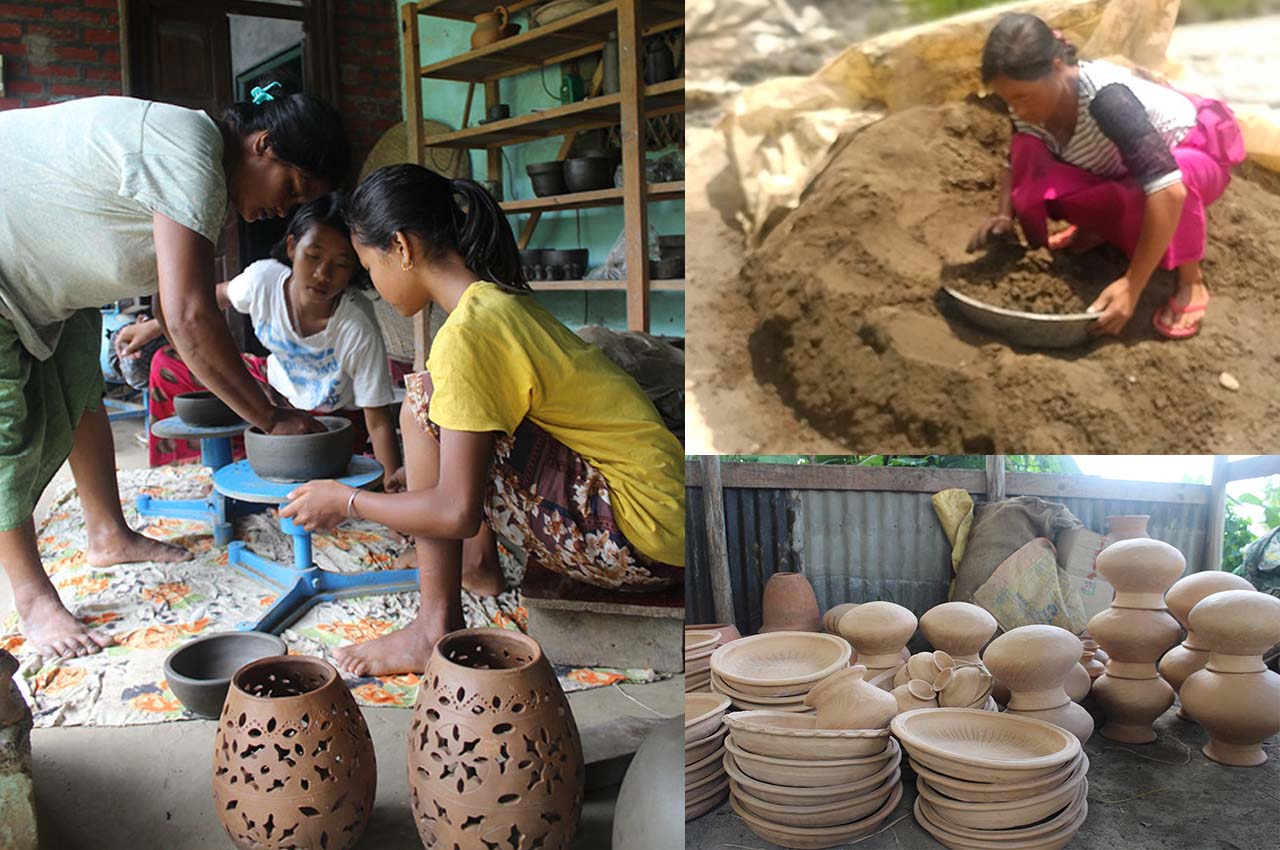
The women in this village share a strong sense of kinship owing to their love for pottery. For example, Bala, Pishak and Nganthoi are a close-knit team working together at Nganthoi Kharabam’s home. They are biological sisters as well as sisters-in-law. Other neighbourhood women—they also address one another as sisters—also come to Kharabam’s house to lend a helping hand and earn. “All Thongjao Ningols here know how to make pots,” they say in unison. Ningols in the Meitei community means ‘daughters’ and is used in the plural form to identify the women of a particular village or clan or neighbourhood.
Women like Bala “grew up with pots and earthenware”. The pottery tradition has always been there in the village, in their homes, and their neighborhood since time immemorial. It’s a skill that has been handed down by their parents and grandparents, explains Pishak. “We can’t recall when it started or, so to say, when it originated,” she says.
In the same neighborhood, four houses apart, Binarani and Victoria come to their parents’ home every day to work alongside their eldest sister, Kamla Samjetsabam, 48, who is an expert craftswoman. “I have been doing this work since childhood,” says Samjetsabam. Eventually, in 2005, Samjetsabam took up pottery as a fulltime profession and handles marketing. “We are usually a six-member team but others also join in, depending on the amount of work and urgency,” says Binarani. Since traditional Manipuri pottery is tedious work, working as a collective makes more sense for the women of Thongjao and they share the earnings from selling their ware. “The earning depends on how many pots or ware one can produce,” says Binarani. “Sometimes I may give more time, sometimes my partner might put in more effort, but that’s not an issue.”
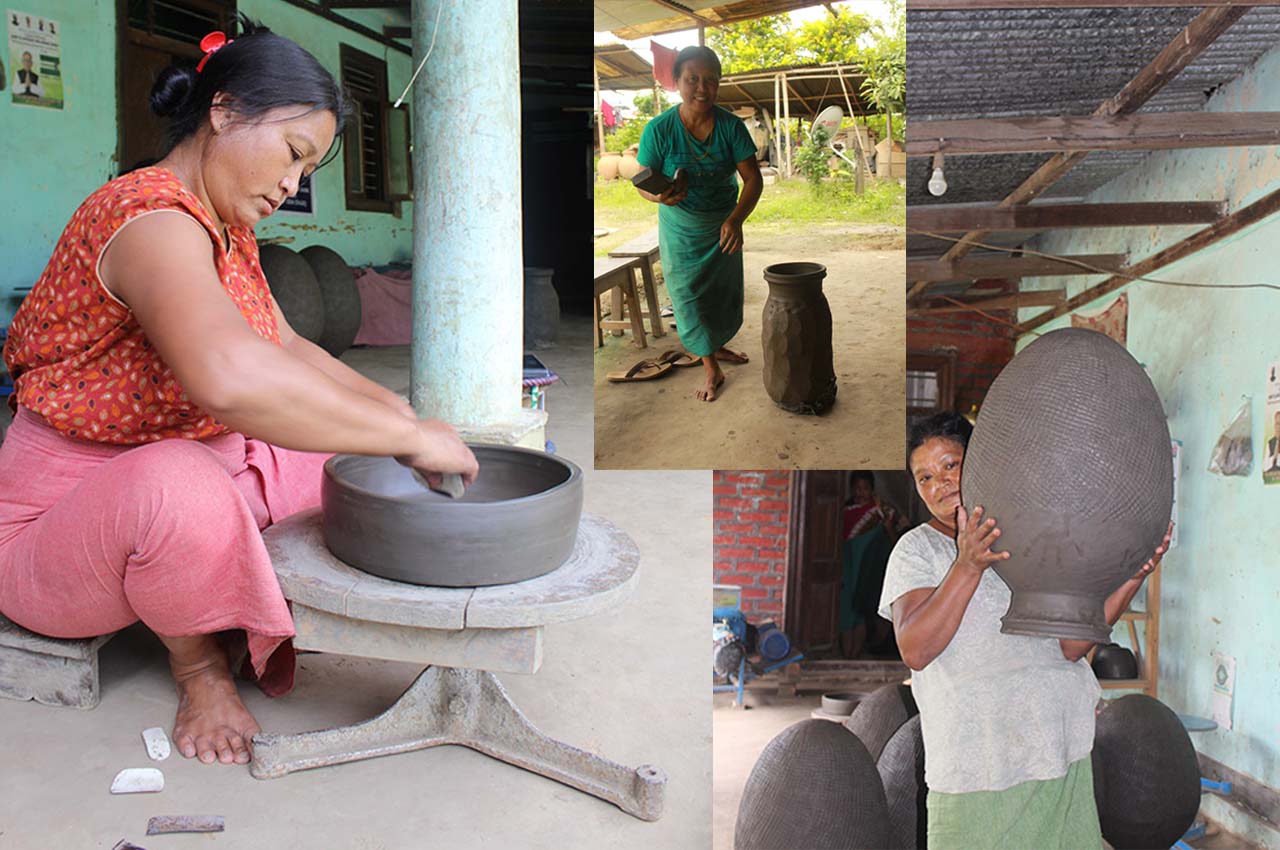
The tradition of pottery and the use of earthenware has been on the wane in Manipur, just as in other parts of India. Besides Thongjao, there are a few pockets which have kept this traditional craft alive such as Andro (Imphal East) and Longpiin Ukhrul. The black clay pots of Longpi village are popular even outside Manipur, but Thongjao is the only place in the state where almost the entire village is engaged in pottery.
They proudly claim that they are the only surviving village and community in Manipur that continues to engage in this age-old tradition. It’s a matter of dignity for them
Not an easy job
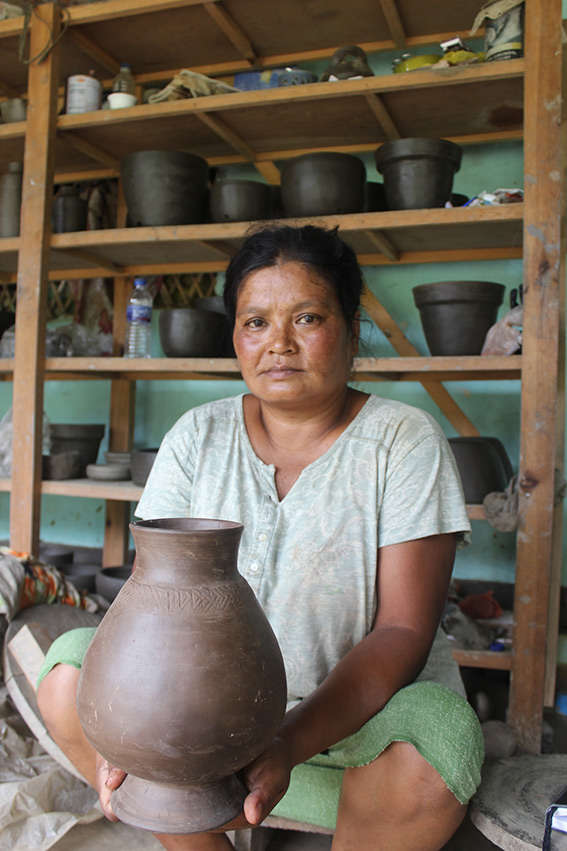
Over time, as people switched to modern utensils even in villages, the demand for earthenware has declined sharply. As a result, the younger generation is not interested in pottery any longer and traditional skills of working with clay are getting lost forever. In this respect, Thongjao potters are an exception but it is still a challenging vocation for them. Making exquisite earthenware is one thing but marketing it is a different ball game. Packaging the delicate earthenware for transportation is another big challenge. “Manipur has a very small population. So few people buy these things,” says Samjetsabam.
Of late, however, there has been an uptick in demand due to people starting to use them for various local rituals. Traditional clay pots are an important part of rituals in the state. Samjetsabam also points out that the demand for earthenware has improved because people started appreciating their utility and value.
For the community, making pots and earthenware is a collective effort. Though women do the actual work of making them, men too play an important role by manually digging out the clay, storing it, usually in the garden or courtyard, and baking. Most of the time, the clay is dug out with spades, but some people have started using excavating equipment like JCBs to speed up the work. But kneading the clay, designing, working the potter’s wheel and all other work is done by the leikainupis (women), explains Samjetsabam. Also, pottery is seasonal work because from the beginning of the monsoon until autumn, both men and women work in the fields.
Thongjao pottery is flourishing because there is an abundance of the main raw material—leingang (red clay) and leirum (grey clay). “It regenerates and as long as the landowner allows us to buy and dig, we will remain in business,” says Samjetsabam. One cycle of making earthenware takes a complete month that includes collecting the right kind of clay, kneading it into dough, working on the wheel, carving designs, baking, and finally giving the finishing touches.
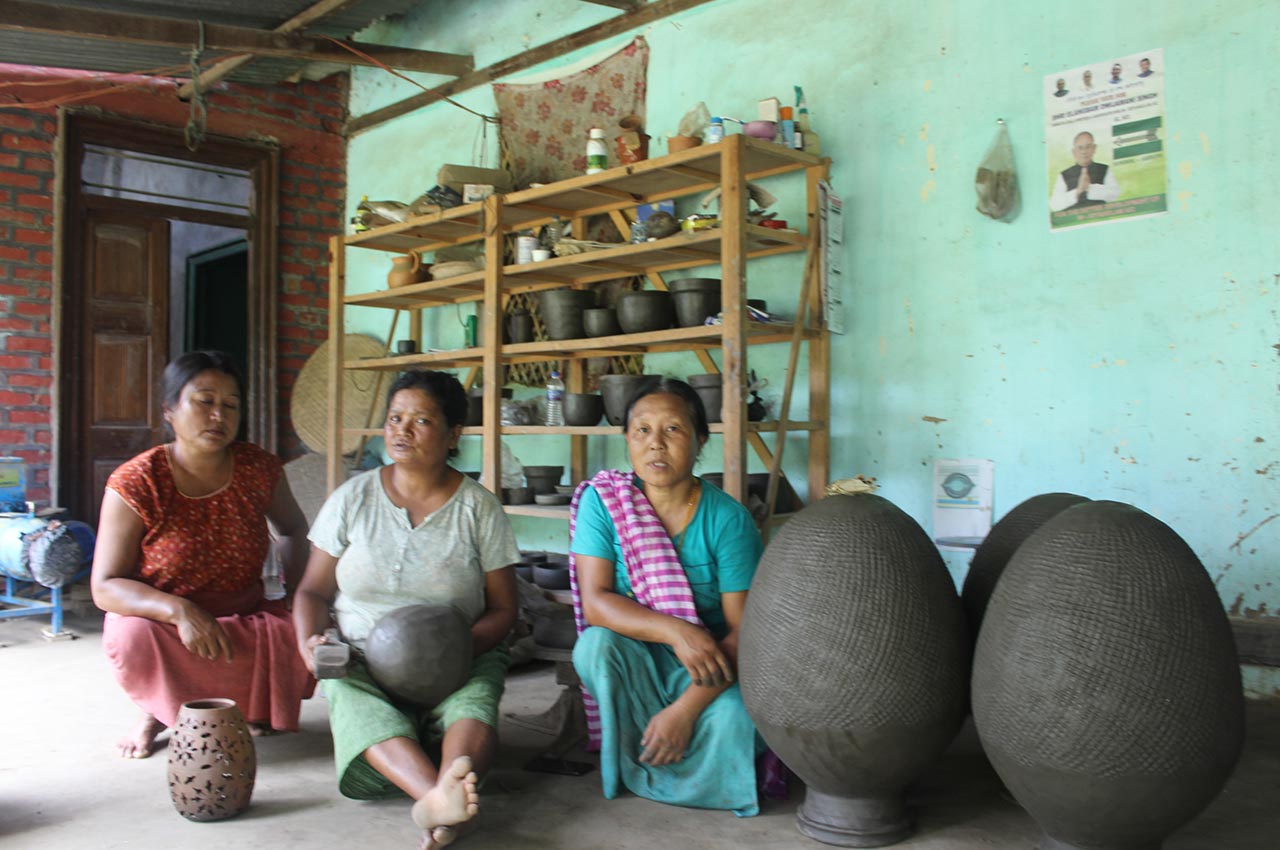
Thongjao pottery making is a completely natural process, which involves curing the earthenware at normal temperature in the open before baking. The crucial process of baking the cured ware is done in a special kiln, using paddy husk that is collected and stored after the harvest. Baking is a delicate process because the chances of breakage and damage are quite high and it is even associated with certain beliefs. Binarani says that they use a special herb called khoizuleikham—plectranthusternifolius, a medicinal plant—during the baking process to “ward off an evil eye”. In one go, they bake about 100 pieces of earthenware in three to four kilns after which the fired earthenware is left to cool and cure for two days.
The crucial process of baking the cured ware is done in a special kiln, using paddy husk that is collected and stored after the harvest. Baking is a delicate process because of chances of breakage
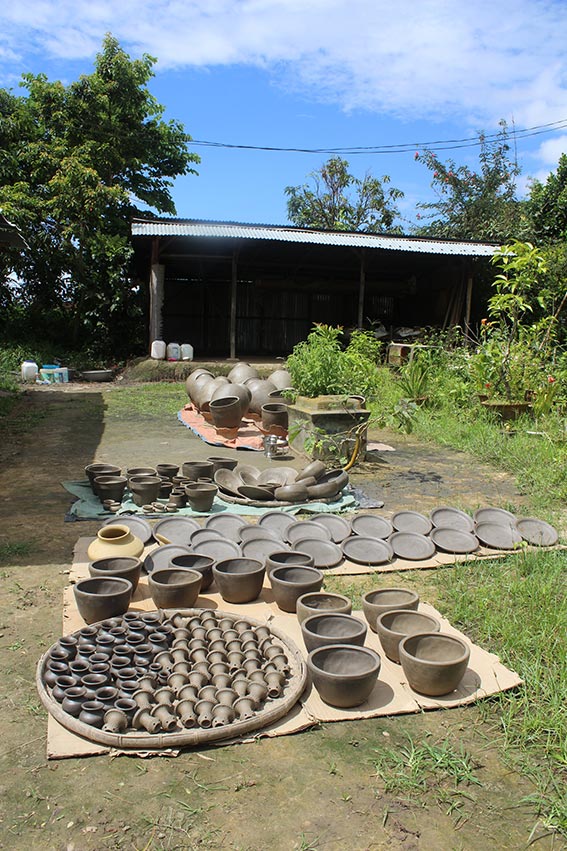
In the market, the prices of Thongjao earthenware range from ₹40 for small pots to ₹300 for ngari kharung, which is about three feet high with a circumference of two feet and derives its name from a local delicacy called ngari—made by fermenting fish. The main market is the world-famous Nupi Keithel (women’s market) located in the heart of the state capital, Imphal.
But transporting the fragile earthenware is a major hurdle and requires careful packaging. This is also one of the reasons for the Thongjao potters not being able to sell their ware outside the state. “Most of our products are purchased by locals here, but we also send them to Nupi Keithel,” says Samjetsabam. “Many people also come to our village to buy our pots and that eases our transportation challenge.”
The demand for Manipur’s indigenous pottery goes up on special occasions such as weddings, Swasti puja (celebrated on the fifth day after a child’s birth), and religious festivals. In more recent years, social events, which have become bigger with time, such as political rallies and public gatherings, have also helped in raising demand and revived interest in Thongjao pots and other earthenware. “Swasti puja happens almost on a daily basis, thanks to population increase,” says Samjetsabam, unlike in the previous decades when marriages and births in villages were rare due to low population. The variety of Thongjao pots have specific uses at various functions such as leirikhongbanbi (for storing the local brew), esingkharung (for water) and ngari kharung (for fermenting fish).

The demand for Manipur’s indigenous pottery goes up on special occasions such as weddings, Swasti puja, and religious festivals. Social events have become bigger with time
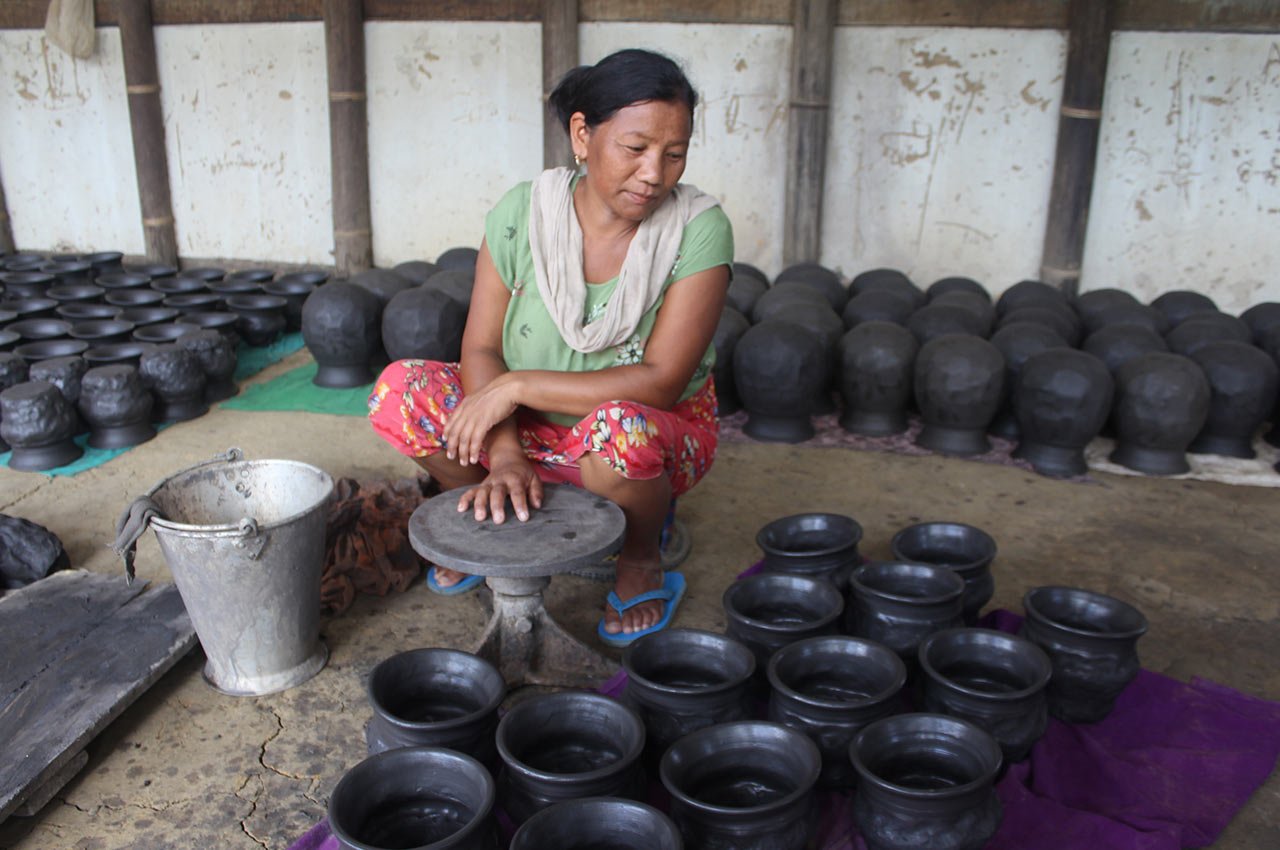
Interestingly, unlike the rest of rural Manipur where women turn out exquisitely woven handloom products, the women of Thongjao prefer pottery over working on the looms. “For us, pottery is much more economical and profitable than handloom,” says Samjetsabam. To encash the increasing demand for earthenware in the state, the potters of Thongjao are diversifying into making lampshades, flower pots, and gift items like mugs and cups.

